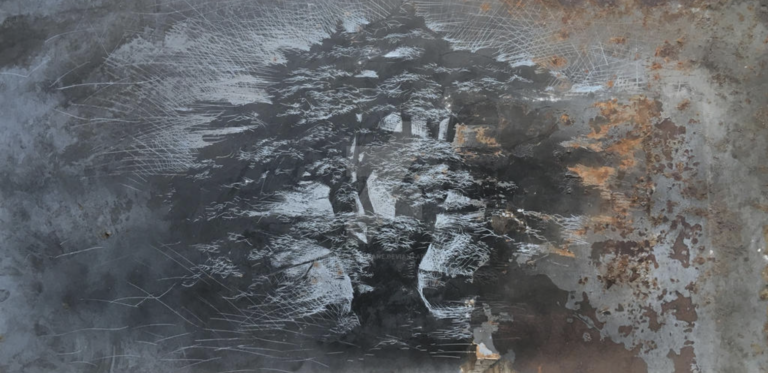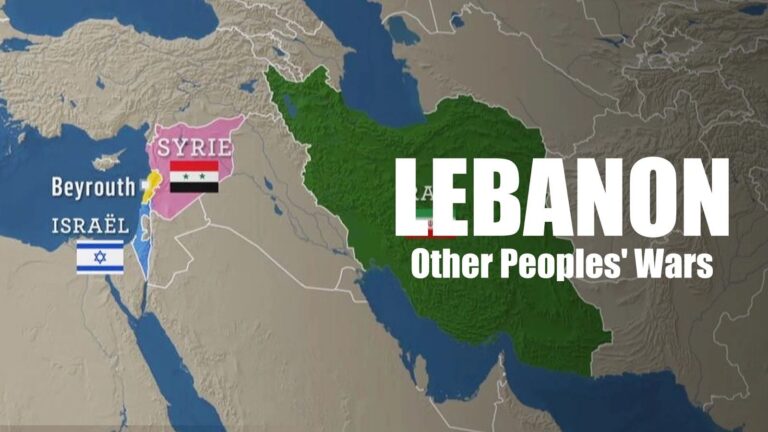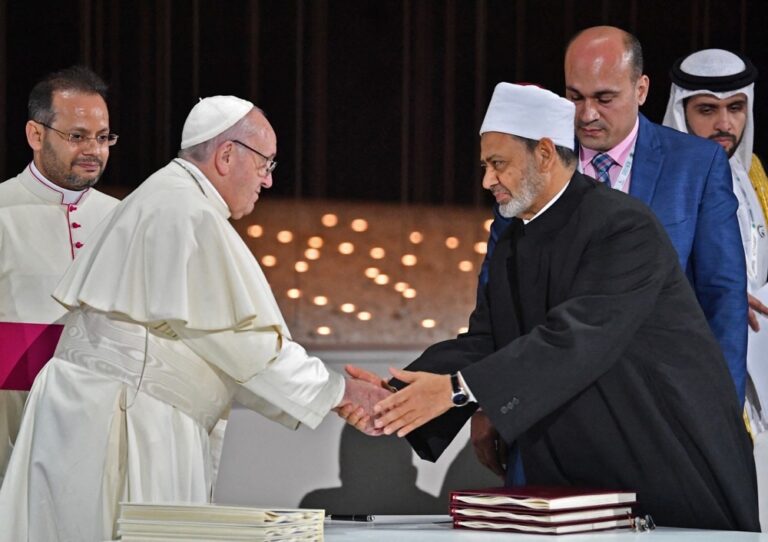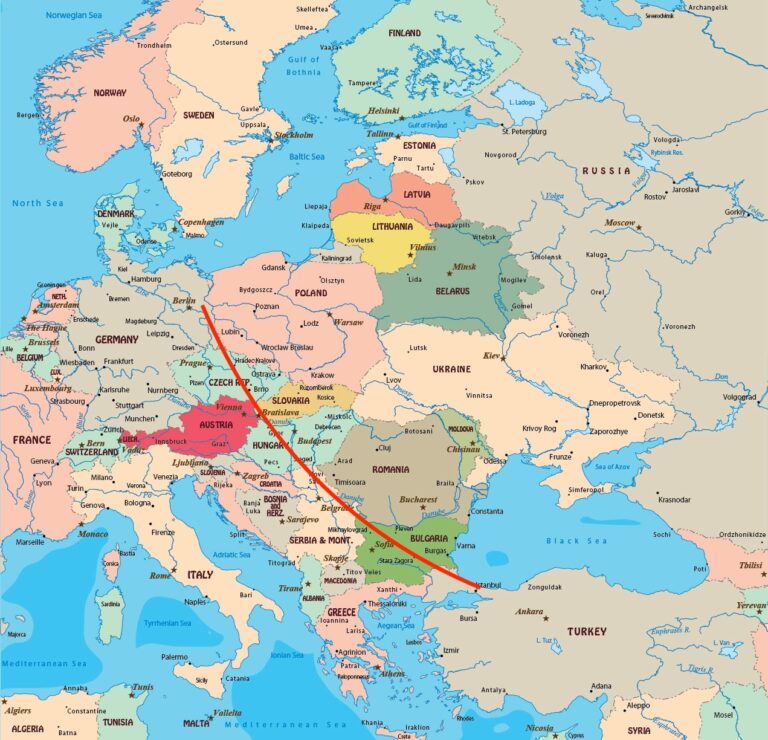By Andrea Tucci,
On October 7, Hamas attacked Israel, killing 1,139 people, and Israel began bombing Gaza in retaliation, killing more than 32,000 people to date.
On October 8, Hezbollah launched attacks on the Israeli-occupied Shebaa Farms, and Israel launched attacks on southern Lebanon.
By March 6, 117 phosphoric bombs had been dropped on southern Lebanon, according to Lebanon’s National Council for Scientific Research (CNRS). Attacks continue.
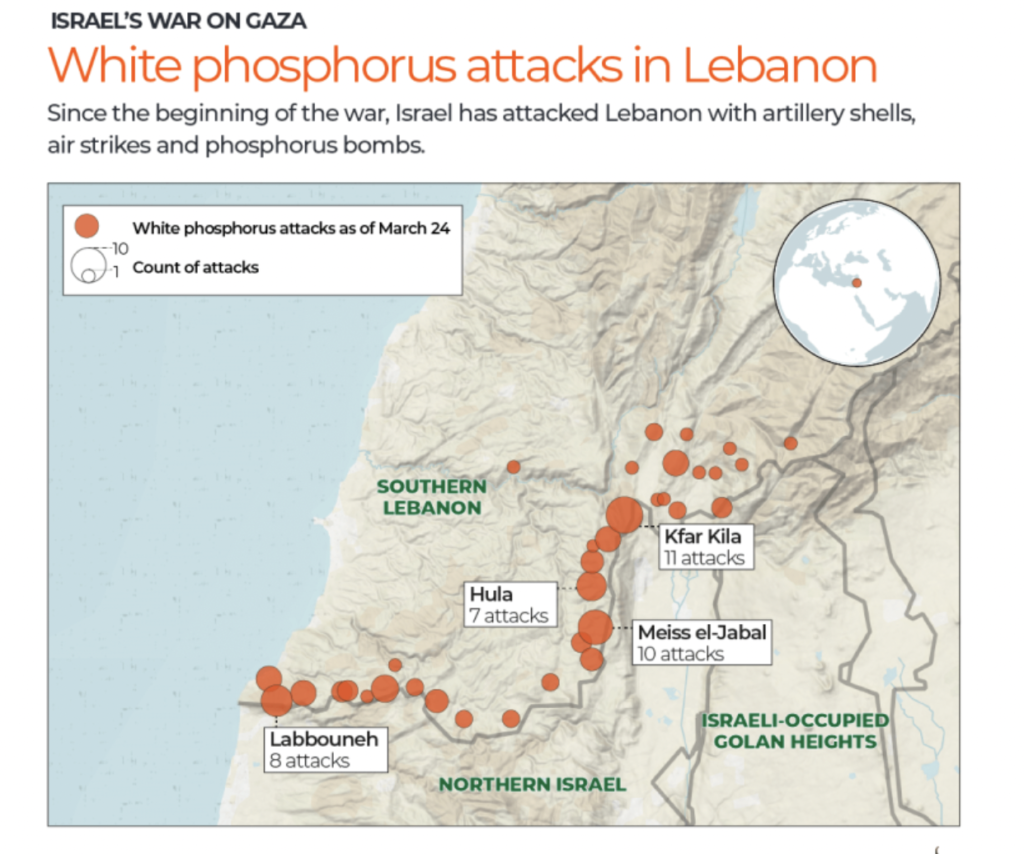
Israel claims it uses white phosphorus munitions to create a smokescreen on the battlefield. But in discussions about Israeli use of white phosphorus, with experts in a range of domains in Lebanon, a common theory emerged: Israel is using it as part of a larger strategy to push out civilians and make south Lebanon uninhabitable, now and in the future.
Since the war began, more than 91,000 people have been forced to flee south Lebanon, according to the International Organization for Migration.
Another 60,000 are still in active conflict zones, according to the UN, many of whom cannot flee due to lack of resources or lack of mobility due to old age or disability.
The smell of white phosphorous, which is similar to garlic, when exposed to the oxygen in the air at temperatures above 30C and rains down streaks of dense white smoke mixed with phosphorus oxides.
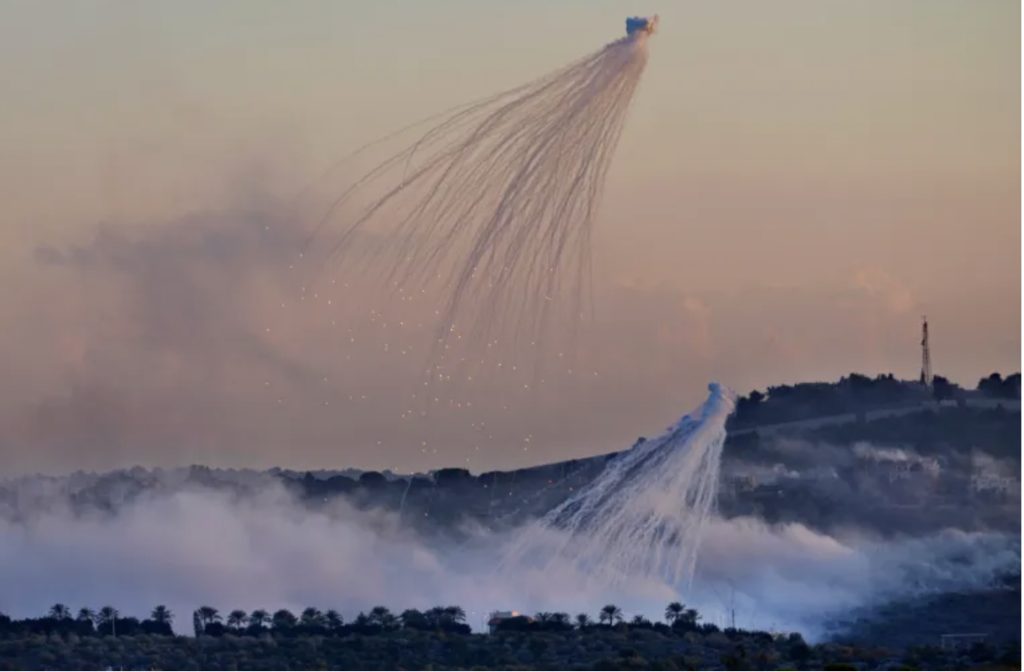
Photo: white phosphorus bombs flying over blazing farmlands or structures
The fiery fragments continue to burn on vegetation, buildings, or right through human flesh until they are fully oxidised or deprived of oxygen.
On March 19, Oxfam and Human Rights Watch released a memorandum that cited Israel’s use of white phosphorus on Gaza and south Lebanon as one in “a wide range of Israeli violations of international humanitarian law” and called on the Biden administration to “immediately suspend arms transfers to Israel”.
But when it comes to Lebanon, “this isn’t something new.
The Israeli army targeted civilians with white phosphorus in the 1982 invasion and since October 7 there has been a lot of white phosphorus used on forests, plantations, olive and fruit trees.
Israel’s invasions of Lebanon in 1978 and 1982, its occupation from 1985 to 2000, and the wars between Hezbollah and Israel in 2006 and 2023-2024 have eroded the land on the Lebanese side of the border.
It’s been the southern Lebanese who have paid the heaviest price over four decades. “The clear example was the use of cluster munitions in 2006, which really sought to render southern Lebanon uninhabitable.” Particularly during the last three days of the conflict when both sides knew a settlement was imminent”, Israel hit wide swathes of southern Lebanon with between 2.6 and 4 million cluster munitions.’
“ They want to push civilians away by terrorising them and creating a buffer zone on Lebanese territory”.
The injuries of white phosphorus is causing respiratory damages are severely painful and necrotic, with zombie-like wounds on parts of the body hit by phosphoric oxides a scatter of deep circular red holes surrounded by jaundice-yellow skin. The oxides can reignite in the skin unless the burns are covered immediately and kept covered to prevent any exposure to oxygen.
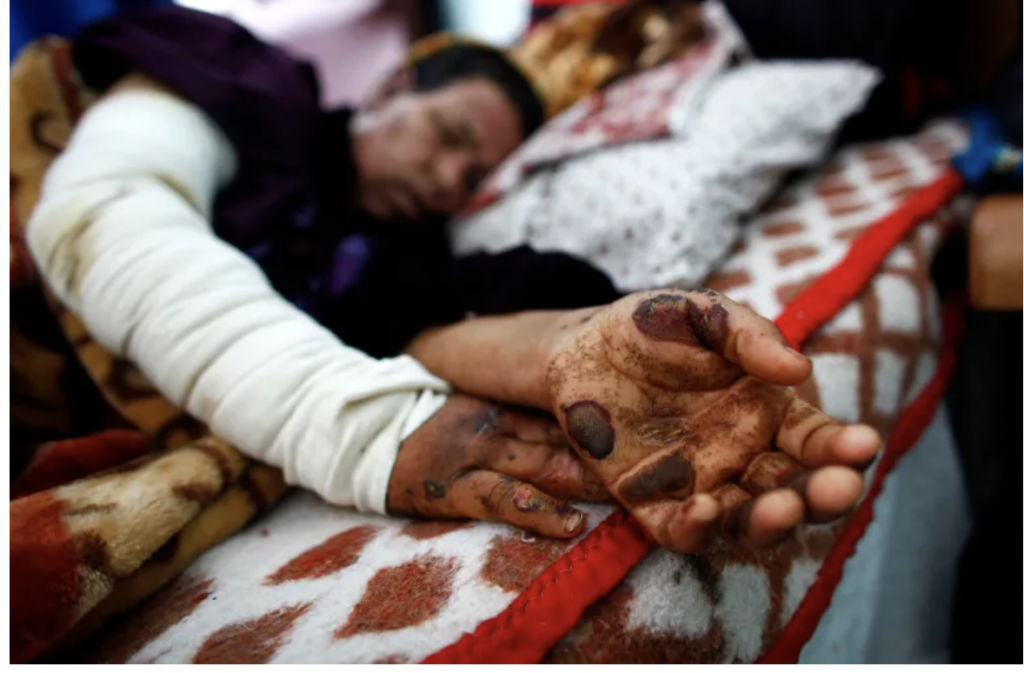
Photo: burns caused by white phosphorus
A report by the Beirut-based research and advocacy group found that more than 100 people had been transferred to hospitals in south Lebanon with difficulty breathing or phosphoric burns as of November 21.
Other symptoms can include severe respiratory problems, acute lung injury, severe eye damage, second or third-degree burns, or even severe bone diseases, such as the necrotic “Lucifer’s jaw” is a severe bone disease (osteonecrosis) that affects the jaws.
In October 2023, human rights groups like HRW and Amnesty International documented Israel’s use of white phosphorus in dense civilian areas in Gaza and farmlands and residential zones in south Lebanon.
Data collected by local and international bodies show that Israeli white phosphorus shells have struck at least 32 towns and villages, spanning nearly the entirety of Lebanon’s 100km southern border hitting agricultural lands, which means a large supply of food.
Israel is trying to create a buffer zone and to make this land “uninhabitable and impossible to cultivate.”
The damage done by white phosphorus and other weapons is having a profound, and some fear irreversible, effect on local agriculture.
South Lebanon is a major agricultural region, accounting for a third of Lebanon’s olive oil production, much of that land is close to the border with Israel.
In a village named Rmeish, with a majority of Christian people, 15.000 olive trees have been destroyed and entire lands around.
Nearly 1000 hectares of land has been burned by white phosphorus and other incendiary weapons, according to CNRS and there is concern over the potential impacts will have on the soil and local water sources.
“It’s a silent killer where the perception is that it doesn’t kill you on the spot, but it will infiltrate your food, it will infiltrate your water, it will infiltrate your air and damage you progressively over the years.
Since the war started 63 percent of farmers in the south who have struggled to safely access their crops left their farms,according to the UN’s Food and Agriculture Organization (FAO). Many are leaving their towns and leaving their lands behind.
Driving out civilians, burning down their agricultural lands, poisoning their soil and water, destroying their homes, dropping cluster munitions, and paralysing the local economy are part of what they say are efforts to make south Lebanon uninhabitable today and tomorrow, and for a long time in the future.

